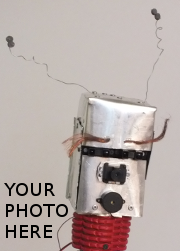Difference between revisions of "SmallBasketBot"
| Line 14: | Line 14: | ||
|type=Course | |type=Course | ||
}} | }} | ||
| − | |||
| − | |||
| − | |||
The purpose of this project is to create a toy robot for the fun of children trying to capture their interest through the intelligent interaction of the machine, which should give the impression of playing with them following the position. | The purpose of this project is to create a toy robot for the fun of children trying to capture their interest through the intelligent interaction of the machine, which should give the impression of playing with them following the position. | ||
Latest revision as of 21:56, 26 September 2017
SmallBasketBot
| |
| Short Description: | Robogame |
| Coordinator: | |
| Tutor: | AndreaBonarini (andrea.bonarini@polimi.it) |
| Collaborator: | |
| Students: | StefanoPersico (stepersico@tiscali.it) |
| Research Area: | Robotics |
| Research Topic: | Robot development |
| Start: | 2017/06/10 |
| Status: | Active |
| Level: | Bs |
| Type: | Course |
The purpose of this project is to create a toy robot for the fun of children trying to capture their interest through the intelligent interaction of the machine, which should give the impression of playing with them following the position.
The game, very traditional, consists of a small moving basket that moves in front of the child who will try to score with colored plastic balls. The interaction is related to the fact that the basket should move keeping a certain distance from the person and correcting its trajectory to always keep the almost steady player into the center. Also are forseen actions controlled by hand clapping and the signaling/counting of balls entering the basket with relative lighting.
Having to be the project as cheap as possible, it will use low-cost engines and sensors. We will therefore try to overcome the obstacles inherent to the intrinsic imprecision of the available devices by writing a code that takes account, at least in part, of these limits.
In addition to creating a small two-wheeled robot able to move in the environment (controlling motion based on sensor readings to avoid obstacles), is added a set of sensors dedicated to person's recognition.
Current work, in addition to continuous optimization of engine operation to better control the movement, focuses on the ability to locate the person in space using the information of two distance sensors and a pir sensor mounted on a servo. With the values of the two distances appropriately mediated over time, we try to measure, even if very roughly, near or far objects and profiles and then also the presence of a person in the foreground.
